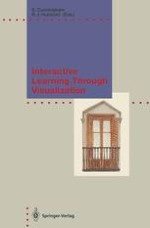This book contains a selection of papers presented at the Computer Graphics and Education '91 Conference, held from 4th to 6th Apri11991, in Begur, Spain. The conference was organised under the auspices of the International Federation for Information Processing (IPIP) Working Group 5.10 on Computer Graphics. The goal of the organisers was to take a forward look at the impact on education of anticipated developments in graphics and related technologies, such as multimedia, in the next five years. We felt that at a time when many educational establishments are facing financial stringency and when major changes are taking place in patterns of education and training, this could be valuable for both educators and companies developing the technology: for educators, because they are often too bogged down in day-to-day problems to undertake adequate forward planning, and for companies, to see some of the problems faced by educators and to see what their future requirements might be.
